Climbing Mount Kilimanjaro or hiking to Everest Base Camp are two amazing bucket-list adventures.
As someone who has completed both hikes (multiple times), I thought I would share my thoughts on the key differences between Kilimanjaro vs Everest.
Let’s jump in!
My Quick Takeaways:
Deciding between climbing Mount Kilimanjaro and trekking to Everest Base Camp? Here's a quick comparison to help you choose:
- Activity Type: Both are trekking adventures requiring no technical climbing skills.
- Maximum Altitude: Kilimanjaro's summit stands at 5,895 metres, while Everest Base Camp reaches 5,364 metres.
- Trip Duration: Kilimanjaro expeditions typically last 6 to 9 days, whereas the Everest Base Camp trek spans 10 to 14 days.
- Cost: Climbing Kilimanjaro is generally more expensive, averaging $2,000 to $3,000, compared to $1,000 to $1,500 for the Everest Base Camp trek.
- Success Rates: Both treks boast high success rates, with Kilimanjaro at 75%+ and Everest Base Camp at 90%+.
- Scenery and Culture: Kilimanjaro offers diverse ecosystems, from rainforests to alpine deserts, culminating in a solitary summit experience. The Everest Base Camp trek provides immersive cultural encounters in Nepalese villages, set against the backdrop of the towering Himalayas.
Both journeys offer unique challenges and rewards. Your choice should align with your fitness level, time availability, and desired experience.
Ready to learn more? Let's put Kilimanjaro vs Everest in my ultimate showdown.
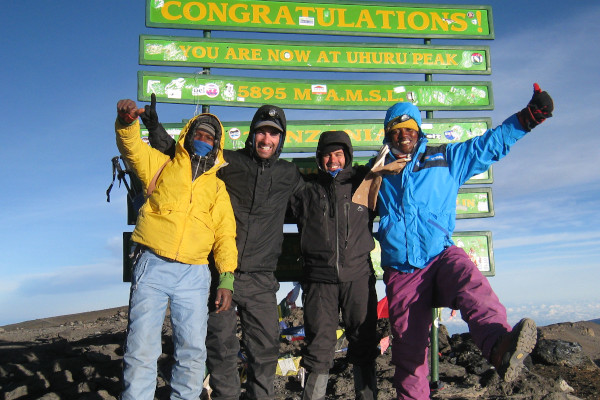
Plan your Kilimanjaro trek
Get a quote from my recommended local Kilimanjaro operator
Mount Kilimanjaro vs Mount Everest
Before I start sharing the key differences between these hikes, its worth clearing up some confusion.
When people search for terms like “Kilimanjaro vs Everest” or “Mt Kilimanjaro vs Mt Everest”, I’m never sure if they are genuinely looking to climb Mount Everest, or have got confused and are actually interested in the far more common, safer and attainable experience of hiking to Everest Base Camp (EBC).
The two options are very different in nature!
Climbing Mount Everest is a serious mountaineering undertaking that is relatively dangerous, whereas the hike to EBC is a challenge but very doable for the average person.
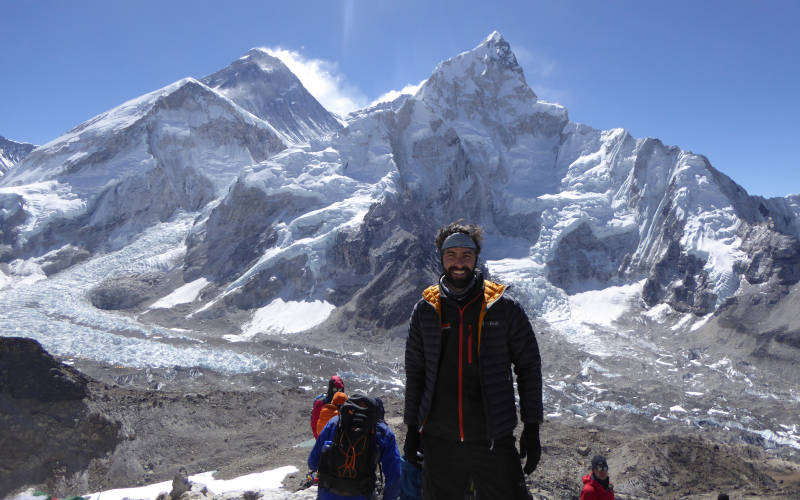
This picture is taken from Kala Pattar. Mount Everest is the black rock face in the background.
You can see the Khumbu Icefall snaking its way down the valley. And if you look closely towards the bottom left of the picture you will see orange and yellow dots, these are tents at Everest Base Camp.
For the purposes of this article, I am comparing and contrasting hiking Kilimanjaro vs trekking to Everest base camp.
But the table below includes climbing Mount Everest to give you a scale of the differences.
Kilimanjaro Hike vs EBC Trek vs Climbing Mount Everest
Differences | Kilimanjaro Hike | EBC Trek | Climbing Mt. Everest |
|---|---|---|---|
Activity type | Hiking. No technical climbing skills required. | Hiking. No technical climbing skills required. | Mixed rock and ice mountaineering. Climbing skills required. |
Max. Altitude | 5,895 meters (19,341 feet) | 5,364 meters (17,598 feet) | 8,848 meters (29,031 feet) |
Trip length | 6-9 days | 10-14 days | 6-8 weeks |
Cost | $2,000-$3,000 | $1,000-$1,500 | $30,000-$80,000 |
Routes | 7 Route Options | Multiple Options | Two main routes – South (Nepal) and North (Tibet) |
Summit Success | 75%+ | 90%+ | 60%+ |
Number of People | 35,000+ per year | 40,000+ per year | 800 per year |
Death Rate | <0.05% | <0.05% | 0.5-1.5% (varies) |
Everest and Kilimanjaro Hikes (Main Differences)
Cost
The cost difference between Kilimanjaro and Everest base camp is quite significant.
Hiking Kilimanjaro is at least 2 times more expensive than trekking to Everest Base Camp, despite taking less time to complete.
The average Kilimanjaro climb cost will set you back around $2000-$3000, whereas EBC costs around $1000-$1500. These costs exclude international flights.
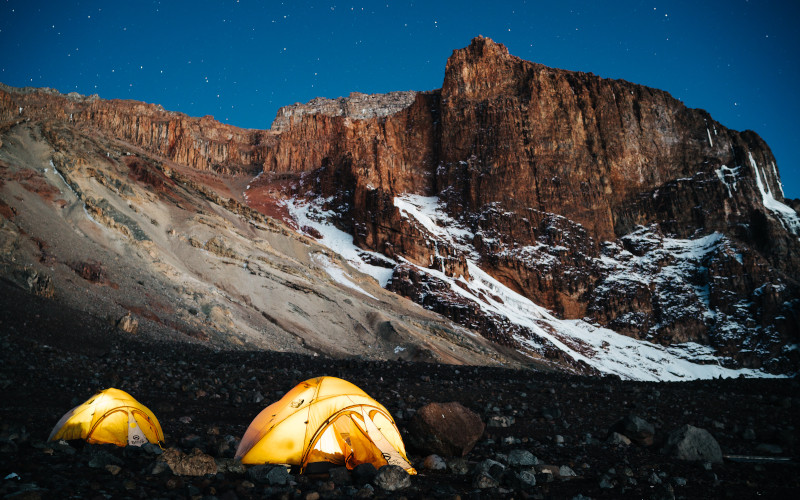
A beautiful star-gazing night on Mount Kilimanjaro
You can of course find cheaper tours, but these often exclude certain items and in the case of Kilimanjaro may mean someone is being exploited.
The reason why hiking Kilimanjaro is more expensive is two-fold.
Firstly, the Kilimanjaro National Park fees are around $1000. There is no way to get around this.
Secondly, Kilimanjaro is a portered hike. This means you can’t hike the mountain unsupported.
At a minimum you need to take a registered guide, but almost all tour operators include full support teams to carry camping gear, food etc. On average, every hiker on Kilimanjaro has 3 support crew.
On the other hand trekking and National Park fees in Nepal are very cheap. For EBC you will need to pay about $50 for permits.
EBC can also be completed unsupported, and because most people sleep in teahouses (more on this later), there is no need to have big support crews to carry gear and food.
Trip Length
Hiking Kilimanjaro can be completed in as little as 5 days, although summit success rates are much higher on 7 and 8-day routes that offer much better acclimatisation.
Everest treks also vary in length, but the classic route to EBC takes around 12 days (depending on how many acclimatisation rest days one takes).
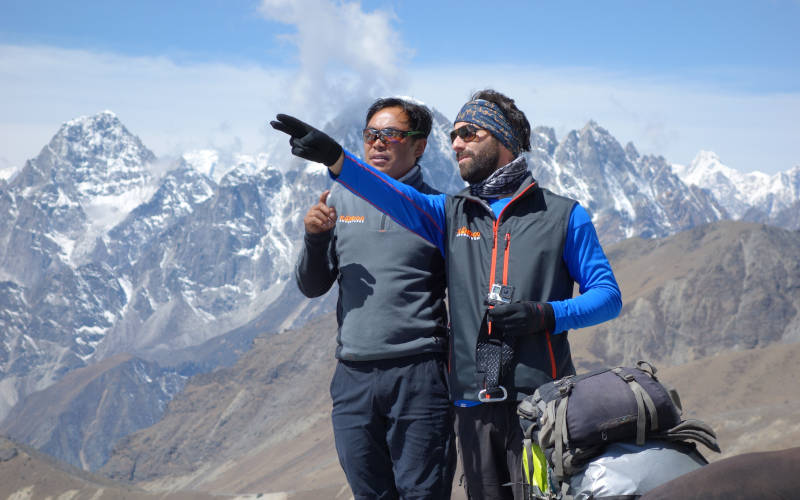
Taking in the Himalaya scenery in the Everest region.
Factoring in pre and post trek days, the average Kilimanjaro adventure takes 8-9 days, whereas EBC takes around 14-15 days.
Route Options
There are 6 main route options on Kilimanjaro – two from the West, three from the South and one from North.
There are also variations on the traverse segments between the southern and northern circuits, and three summit approaches.
The official routes on Kilimanjaro all have designated camping areas and don’t vary in distance considerably (from 60-75km), but do vary in length (from 5 days to 9 days).
The longer routes, like the Lemosho, Machame and Northern Circuit, provide more time to acclimatise and therefore have high summit success rates.
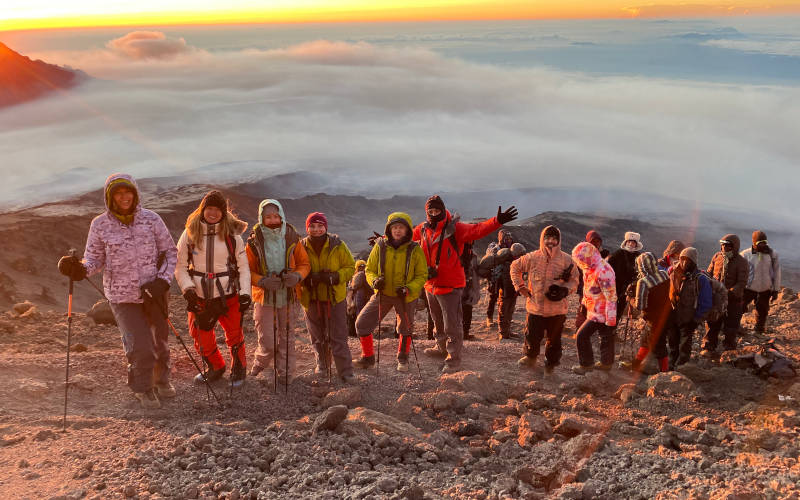
Summit push on Mt. Kilimanjaro at sunrise.
Route options in the Everest region are more variable, and hikers don’t need to stick to specific trails with pre-defined campsites.
This is because many people live in the region and the trails used by hikers are the same trails used by inhabitants. There are literally 100s of different trails with many little villages along the way.
The classic and most popular route to EBC is well-trodden and has lots of villages along the trail.
But there are lots of variations, like the Gokyo Lakes trek or Three Passes hike, which take hikers over major passes.
Moreover, hikers travelling solo or without an organised group can adapt their route on the fly, especially if they know where they are going or have the support of a guide.

Plan your Kilimanjaro trek
Get a quote from my recommended local Kilimanjaro operator
Difficulty
In my opinion, summiting Kilimanjaro is more difficult than hiking to Everest base camp.
This is because the ascent up Mount Kilimanjaro is relatively rapid, and hence there is less time to acclimatise.
Even the longer 7 and 8-day routes are challenging and people succumb to altitude sickness and need to descend.
In contrast, EBC is much more gradual and most people build in acclimatisation rest days too. This means the incidence of altitude sickness is lower and more people are well acclimatised by the time they reach EBC.
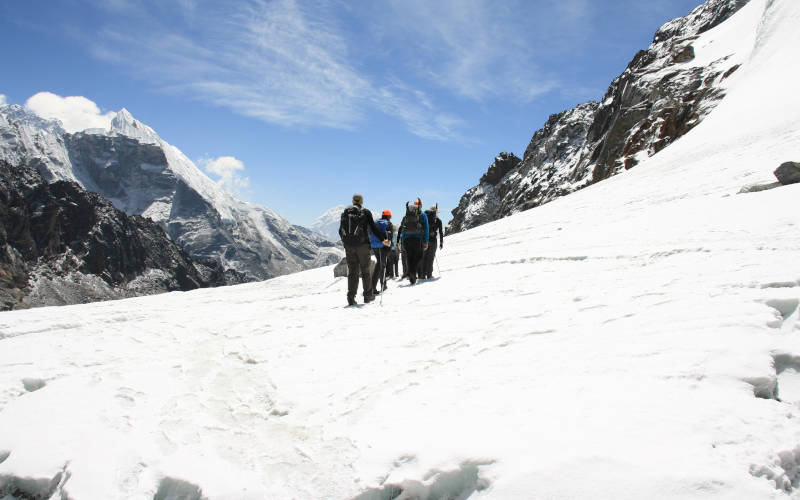
Crossing the Cho La Pass on the Gokyo Lakes trek to Everest.
Nonetheless, the gradual ascent profile in the Everest region is a double-edged sword because if one does, unfortunately, get altitude sickness it means that getting to a lower altitude fast is often not easy and usually necessitates a helicopter evacuation.
This segues us nicely into safety.

Plan your Kilimanjaro trek
Get a quote from my recommended local Kilimanjaro operator
Safety
The biggest risk to your safety on both Mount Kilimanjaro and hikes to Everest base camp is altitude sickness.
The onset of altitude sickness occurs due to rapid ascent to altitude without adequate acclimatisation.
It’s impossible to predict whether you will experience altitude sickness as there is little to no correlation to age, gender, fitness level etc.
What we do know is that a slow ascent profile gives the body time to acclimatise and reduces the risk of altitude sickness.
The only cure for altitude sickness is re-oxygenation of the blood, and the quickest way to do this is to get to lower altitude as fast as possible. If untreated altitude sickness is fatal.
On Mt Kilimanjaro, the ascent profiles of all the routes are relatively rapid. This means that altitude sickness is quite common on the mountain.
However, the longer routes (7-days+) offer relatively good acclimatisation as they build in a principle called walk high, sleep low.
Essentially, this allows one to ascend to high altitude during the day and then descend a little to sleep. This principle helps speed up the acclimatisation process.
The good news is that Kilimanjaro’s rapid ascent profile also means that if you do experience moderate to severe altitude sickness, then it's relatively straightforward to get to a lower altitude quickly.
Altitude sickness is debilitating though so if you do experience severe altitude sickness you will probably need to be carried down the mountain.
Helicopter evacuations are unheard of on Kilimanjaro as it is much faster and cheaper to be carried down the mountain. In fact, you’ll see wheelbarrow stretchers on the mountain that porters use to evacuate sick hikers.
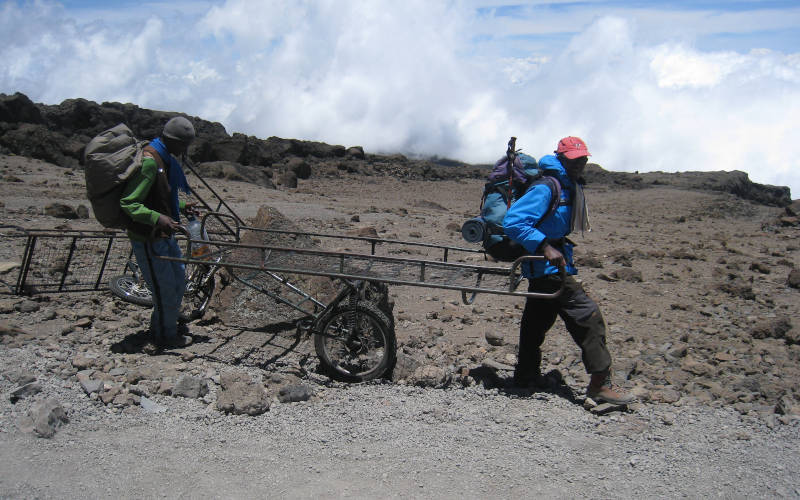
Stretcher evacuation Kilimanjaro-style!
In Everest, things are quite different.
The ascent profile to EBC is very gradual. This means that one can rush the hike and reach EBC relatively quickly (within a couple of days if you wanted).
But if you are not pre-acclimatised you will almost certainly get altitude sickness.
And because what goes up gradually comes down gradually, if you do experience altitude sickness high up on the EBC trail you will likely need a helicopter evacuation to get to a lower altitude quickly.
The key on EBC treks is to go slowly and build in one or two acclimatisation days where you rest at the village to help your body to acclimatise.
You do not want to rush up the trail.
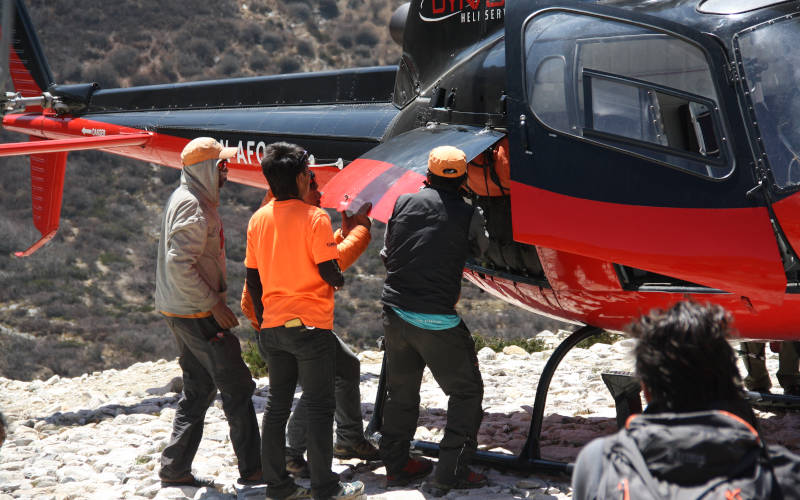
Helicopter evacuation in the Everest region is not uncommon.
To Guide or Not To Guide
The question of using a guide on Kilimanjaro or not has a simple answer. You have to be accompanied by a registered guide to enter Kilimanjaro National Park.
As I mentioned earlier, almost all Kilimanjaro tour operators use portered support teams to carry camping gear and food.
All Kilimanjaro routes except one are camping adventures, which means everything needs to be carried up the mountain.
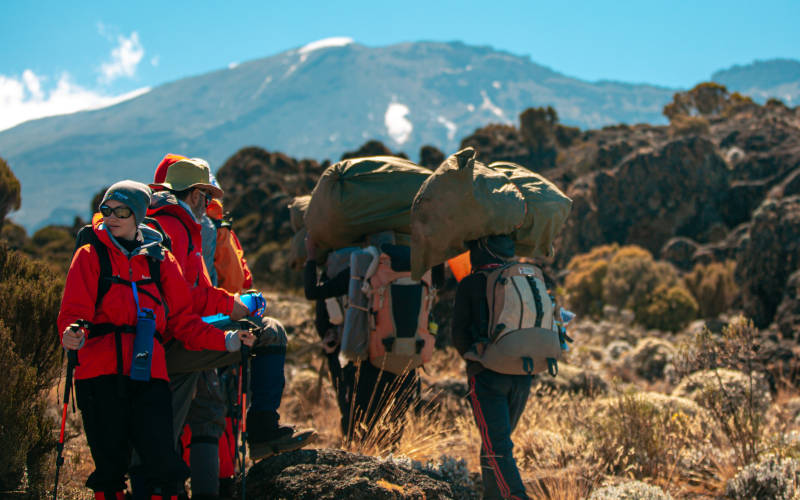
Porters carrying gear on Mount Kilimanjaro.
On Everest treks, you have more flexibility in terms of guides. It is possible to hike to EBC solo or unsupported, and people do.
My Pro Tip: I would only recommend this to seasoned high altitude hikers who are familiar with the Khumbu region.
For those not very experienced or familiar with the region I recommend taking a guide.
Not only does this provide important economic benefits to the communities in the Everest region, but guides are incredibly helpful for wayfinding, navigating high passes and recommending and arranging teahouses.
It is also common for hikers on the EBC trek to use porters to help carry gear.
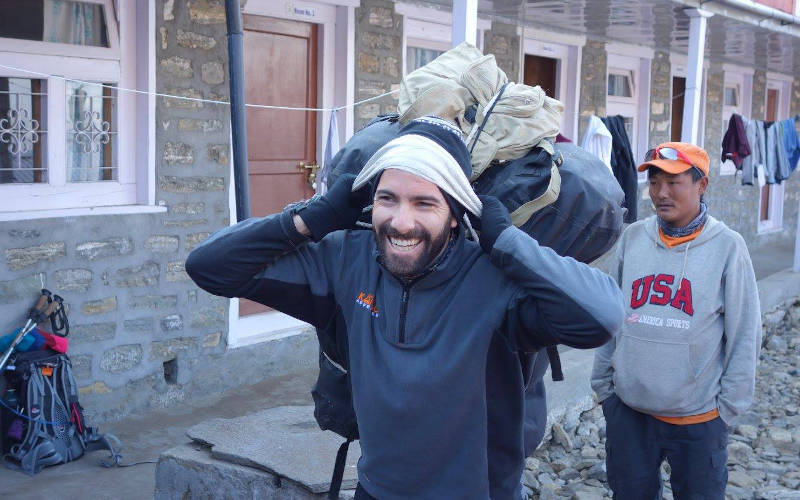
Some hikers use porters in Everest to carry their main gear bag. Porters carry up to two duffels weighing around 30kg!
Accommodation
Accommodation options on Mt Kilimanjaro are very limited.
Apart from the Marangu route that uses hut accommodation, all other routes on Kilimanjaro use campsites.
You don’t need to bring your own tent as all Kilimanjaro operators supply camping equipment as part of their service, but you will need a good quality four-season sleeping bag and mat.
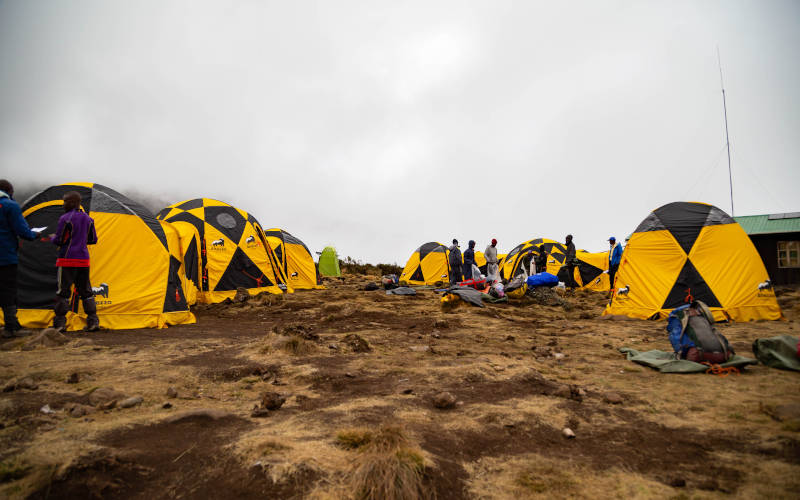
Typical campsite tents on Mount Kilimanjaro
Accommodation options pre and post the Kilimanjaro hike are wide and varied. Most people stay a night in a hotel in Moshi or Arusha.
Accommodation on Everest treks couldn’t be more different. Most EBC hikers use teahouses.
These are hostels that are found in every village in the Everest region. Teahouses provide dorm-like rooms (usually with two single beds, although you can get single rooms), a common area to relax and get warm around a yak-fired stove, and bathroom facilities.
The quality of the latter varies considerably the higher up the trail you get.
On the lower reaches some teahouses have flushing toilets and hot showers, as you get higher you lose flushing toilets, showers and all luxuries.
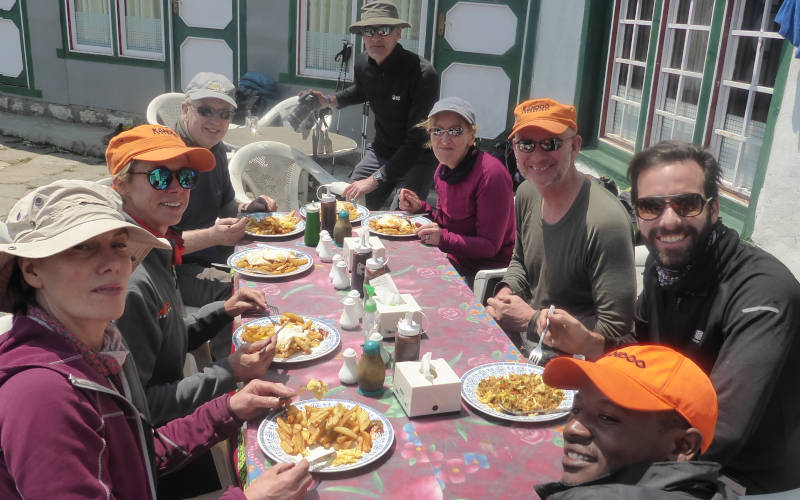
Teahouse egg and chips lunch!
Pre and post Everest treks are usually spent in Kathmandu, where there are lots of hotel options.
Weather and When To Go
The best time to climb Mt Kilimanjaro is either January through March or June through October.
The wet season falls in April and May, and there is also quite a bit of rain in November.
You can hike during these months but it can be quite wet, especially on the lower reaches of the mountain.
December is a fine month to hike too, but there can be quite a bit of snow on the summit.
The peak season is July, August and September, so if you want to avoid crowds either choose a shoulder month like June or October or go earlier in the year.
Hikes to EBC also have two main seasons. March through May and September through October.
My Pro Tip: It is possible to hike during the shoulder months of February and November, but expect colder weather.
June, July and August are the monsoon season, and December and January are the height of winter, so I definitely don’t recommend hiking during these months.

Plan your Kilimanjaro trek
Get a quote from my recommended local Kilimanjaro operator
Other Things To Do
In terms of other things to do I personally think there is more on offer in Tanzania.
Some of the best safari National parks in the world – Serengeti, Nogorogoro – are right on the doorstep of Mount Kilimanjaro, and many people go on a Tanzanian safari after climbing.
The highlight is often witnessing the Great Wildebeest Migration.
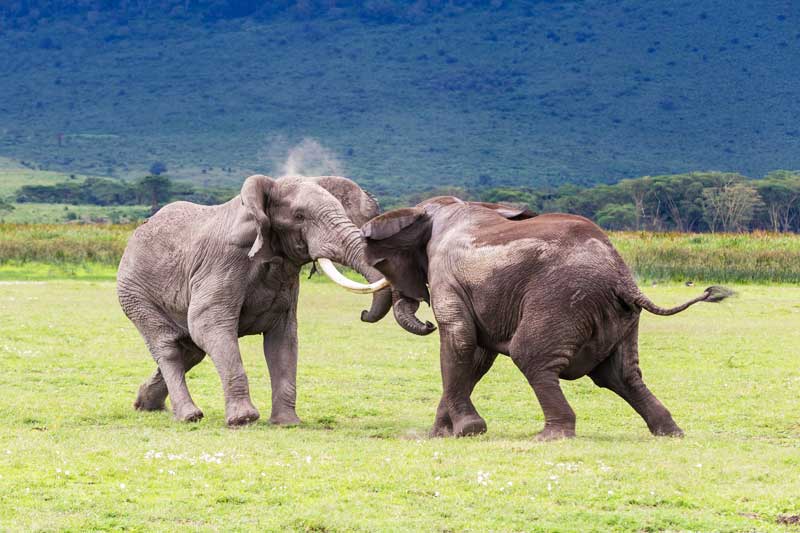
Tanzania’s northern safari parks offer the best safari experience in the world.
Moreover, the tropical paradise island of Zanzibar is also in Tanzania and for those looking to relax on pearly white-sand beaches or go diving, Zanzibar and it’s sister island, Pemba are amazing.
Finally you can also go chimpanzee trekking in Tanzania.
Without a doubt, the main highlight in Nepal are the amazing Himalayas. But after trekking in the Nepal Himal, I’m not a huge fan of travelling in Nepal.
Kathmandu is a vibrant and crazy city, but the after a few days the pollution, noise and frenetic energy drives me a little crazy. Thamel, the backpacker district is a lot of fun, and there are lots of interesting Buddhist and Hindu sights to see.
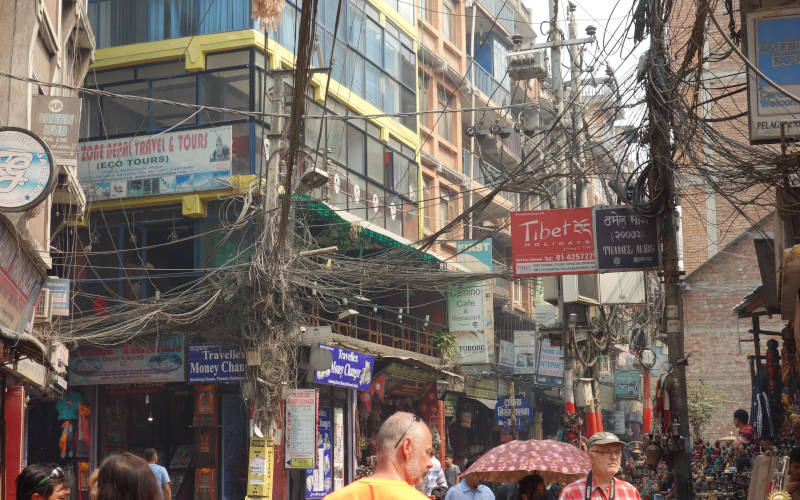
Crazy Thamel district in Kathmandu
South-west of Kathmandu is Chitwan National Park where it’s possible to see one-horned rhinos and Bengal tigers.
Overall Experience
As I mentioned at the beginning of this article, Everest and Kilimanjaro hikes are amazing adventures, and I recommend doing both.
However, if you’re still undecided after considering all the key differences I mentioned above, then hopefully this insight on the overall experience will help.
In terms of Kilimanjaro, the experience lends itself much more to a challenge with a definitive goal in mind – that is reaching the summit of Kilimanjaro.
If you are looking for the kudos of summiting a major mountain then Kilimanjaro is your best option.
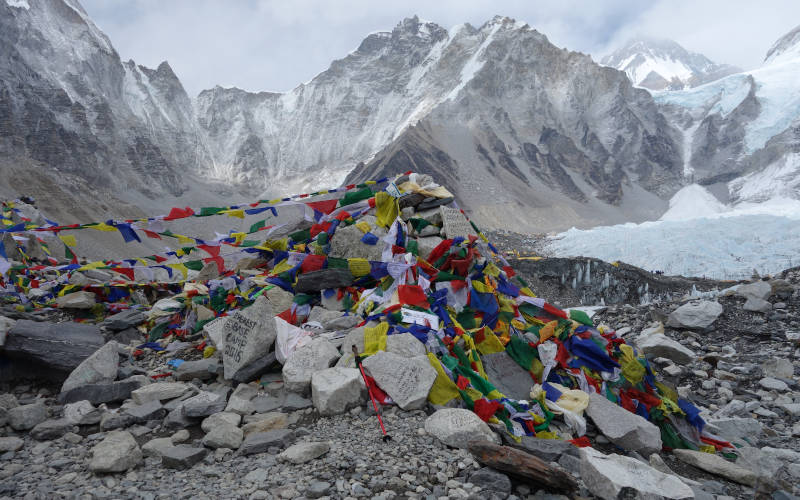
EBC prayers flags. This is as far as hikers can go on the Everest Base Camp trek. It isn’t actually EBC, which can be seen in the distance (see the little yellow dots just right of the prayer flags).
Everest treks are more of a pilgrimage. Of course, reaching EBC is great but I think for most people the amazing scenery of the Himalayas and the cultural experience of interacting with the locals overshadows the need to get a picture of yourself at EBC.
My Final Thoughts
Hopefully my guide puts the Kilimanjaro vs Everest debate to rest. Which adventure calls to you? Let me know in the comments below.
Liked this guide? Check out some of Kilimanjaro guides:

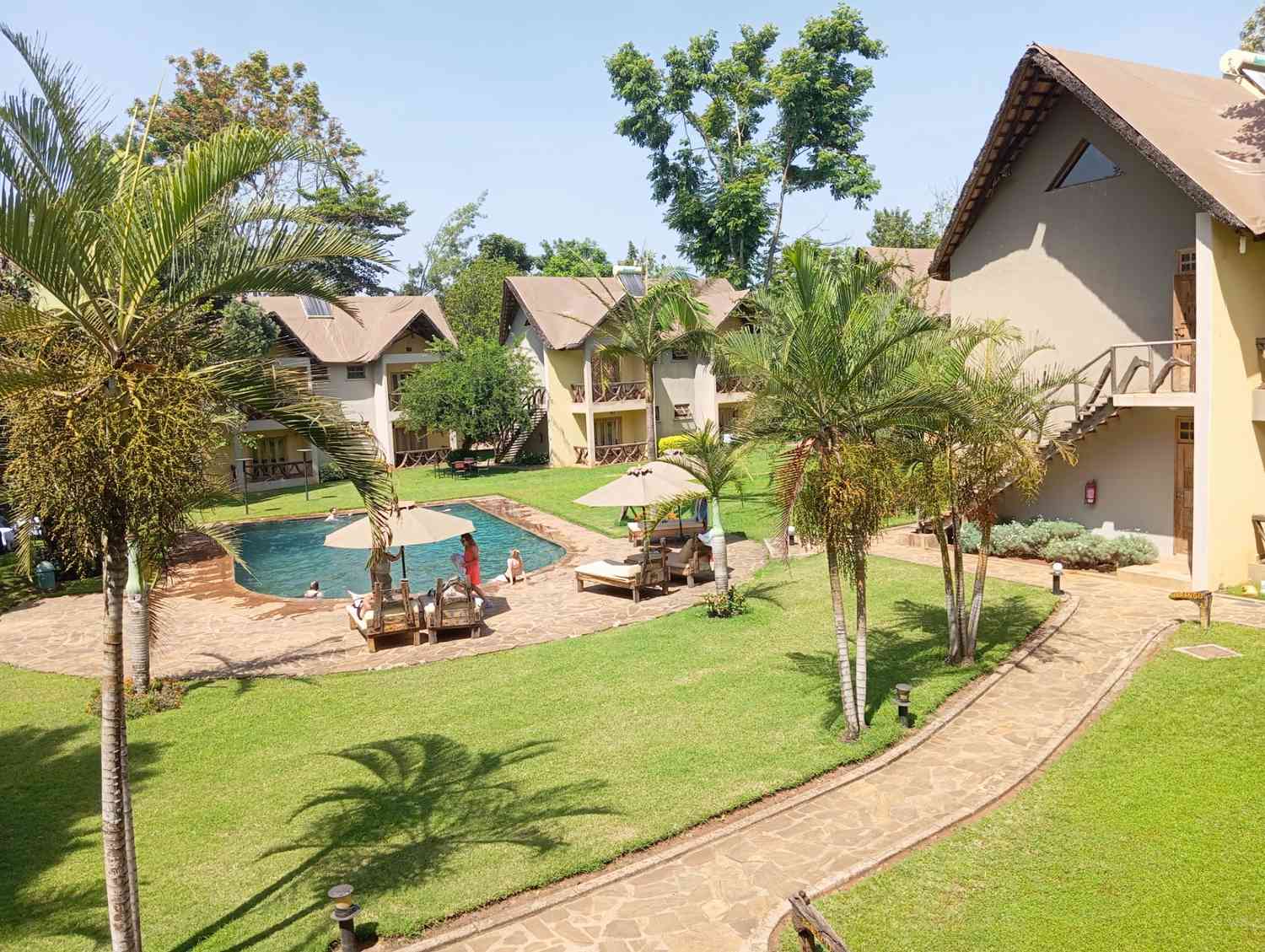
Amazing article, very helpful. Thank you for sharing with us.
Nice post. We did EBC in December. Despite you not recommending it the weather was clear every day but cold. And less trekkers so some big advantages
That’s brilliant James. Glad you got good weather!
Thank you for a wonderfully informative article – I feel transported to both of these beautiful areas (both are on my personal bucket-list). Just a quick question, though: on the photograph taken from Kala Pattar, what is the name of the high peak just to the left of Everest?
Hi Sonia, that’s Changtse.
Amazing. Pl share itinerary for kilimanjaro